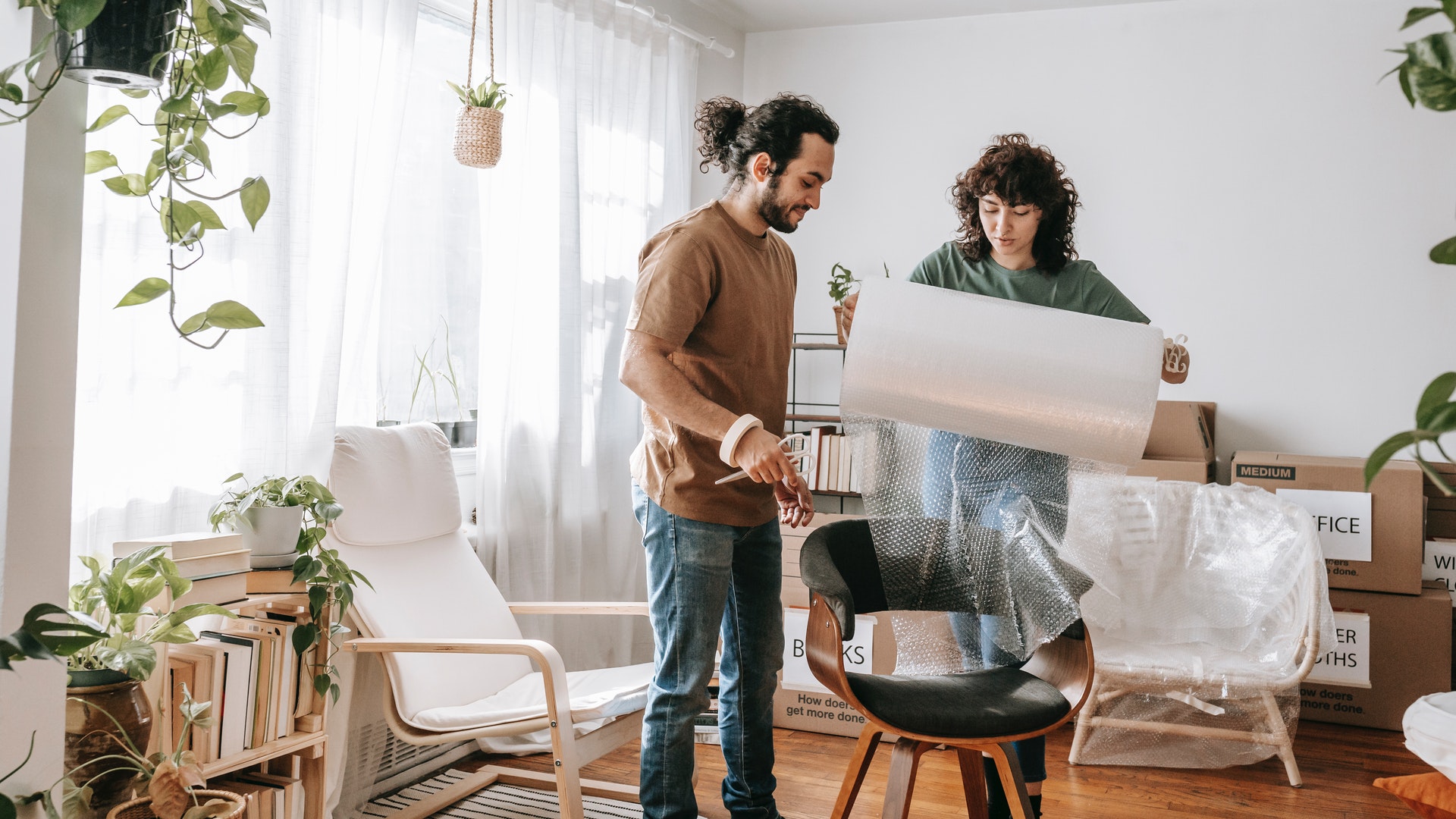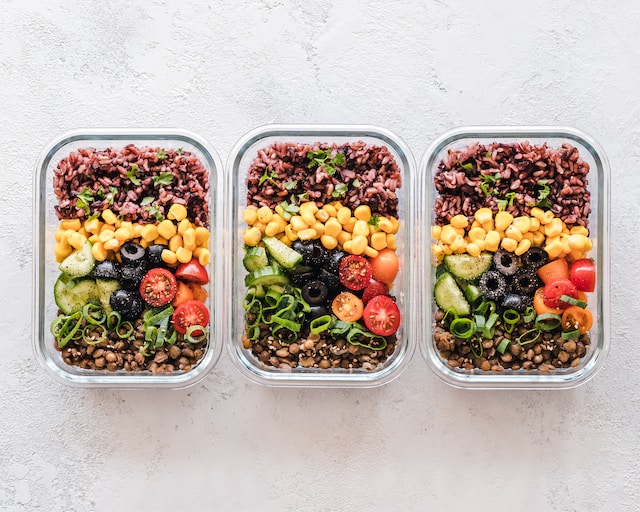Packaging your belongings safely can be challenging, from your beloved flatscreen TV to family heirlooms and artwork. Whether you’re moving into a new home, traveling, or just need to put certain items in storage, knowing how to pack everything the right way can make it a stress-free endeavor. Knowing how to pack for a move will ensure that you protect your items from damage and that they arrive safely to the new location. Read on to learn how to pack certain items correctly and get some packing hacks so you can do it right for every room of your home.
What are you packing for?
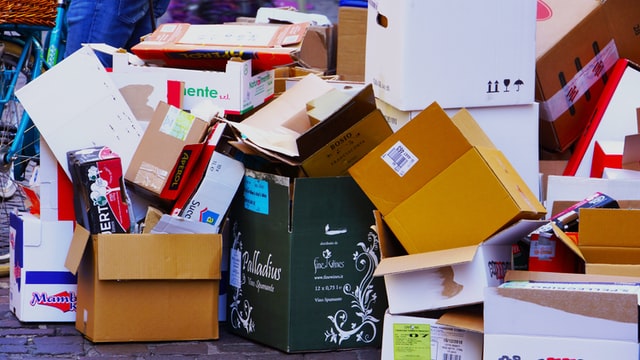
Before you start packing your things, how and where you pack them depends on what you’re packing for.
Moving: Whether you’re moving down the street or across the country, it’s important to make sure that you’re packing to move everything safely, so it doesn’t get damaged in transport. Using quality packing materials like moving blankets and bubble wrap can help. Make sure you label each box by room, so it’s much easier to unpack when you arrive at your new home.
Storage: Properly storing specific items will keep them from getting damaged when you need access to them later. Depending on what and where you store these items, they should always be protected from extreme heat, cold temperatures, and moisture. While a shed or attic might suffice for certain things, a climate-controlled storage unit could be best for others.
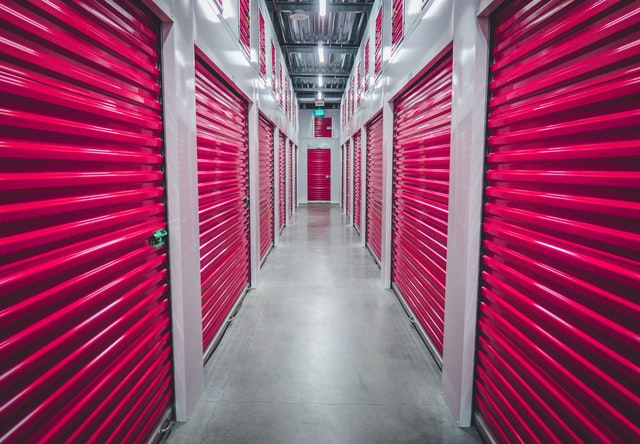
Travel: When it comes to travel, make a travel packing list so you don’t forget essential items like your passport, extra clothing, and toiletries. Efficiently packing your luggage will ensure you have everything you need without weighing you down. Use packing cubes to separate items by type, so you can grab what you need once you arrive at your destination.
Room by room packing tips
Whether you’re packing a house or just planning a trip, here are some helpful packing tips for every room of your home.
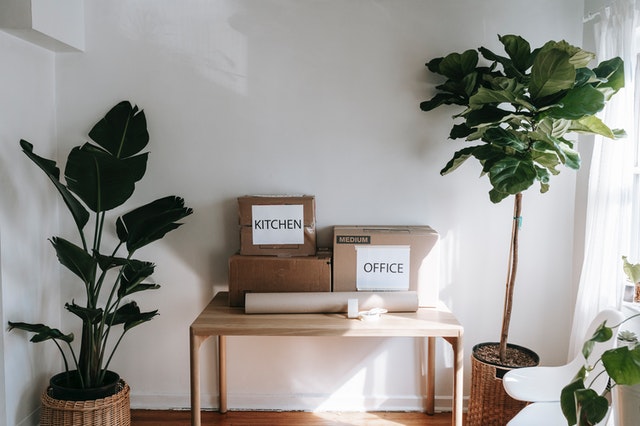
Bedroom and closet: The best way to pack this room is to start by sorting through your clothes and bedding. Create three separate piles, including items you plan to keep, items you want to sell, and things you want to donate. Next, pack the clothing and shoes you’re saving by color or season, then label each box accordingly. You can also leave clothing on the hangers when packing your closet, so all you need to do is re-hang them in your new place. Don’t forget to go through your dresser drawers and nightstand, too. When it comes to knowing what to pack first when moving, always make sure you leave a few changes of clothes out, so you can take them with you. If you’re putting clothes in storage, wash everything first, then cover your clothing with a garbage bag to keep insects and moisture from damaging everything. Use a packing cube for travel, separating undergarments, t-shirts, and pants or denim.
Bathroom and restrooms: This is the perfect time to declutter your bathroom cabinets and vanity. Throw out any expired makeup or toiletries. Leave at least one or two towels out, so you’ll have a clean one when you arrive at your new place. Put anything that can spill into a resealable plastic bag, so it doesn’t leak. Then carefully pack everything and place it in a labeled box. If you are packing toiletries for travel, make sure they are in TSA-friendly containers and a quart-size plastic bag. If you’re putting any of these items in storage, use a transparent tub with a lid. Keep in mind that many makeup items and toiletries will go bad if exposed to high temperatures.
Kitchen: It’s important to know how to pack kitchen items safely to avoid breakage. Use bubble wrap to protect your breakable items like coffee mugs, plates, and glassware. You can also use dish towels and kitchen linens for protection, and if you see anything that’s chipped or cracked, it can be recycled or thrown away. Stack pots and pans and put smaller pots inside of larger ones before wrapping and boxing them. Clean out your fridge and pantry, making sure that you discard expired or spoiled food. It’s also a perfect time to go ahead and cook anything you have before it goes bad. When storing kitchen items, make sure everything is clean and dry. Label each box according to types, such as plates, small appliances, and glasses or mugs.

Living room: The best way to pack living room furniture is by taking it apart whenever possible. Once separated, attach the hardware to the underside of your furniture in a plastic bag, and secure it with a piece of tape. Wrap furniture legs with a piece of cloth or bubble wrap and make sure they stay with each piece of furniture for easy reassembly. Make sure anything with cabinet doors is closed and locked when possible, or wrap the doors to keep them shut, so they don’t fly open in transit. Always pack and wrap art and collectibles with care. Make sure artwork is kept in a climate-controlled environment if you’re planning to put it in storage. Never let pieces of artwork touch each other, or it could damage the painting. You can separate each piece of art using bubble wrap, a piece of fabric, or a Styrofoam sheet. Disassemble lamps and remove the bulb, then pack the base and shade separately. Always pack your TV upright and cover it entirely with a moving blanket. If you’re storing living room items, make sure to cover them with a blanket so they don’t get wet or infested with pests.
Office/studio: Go through your home office and shred any old, outdated paperwork. Place files in their folders, then keep everything together in a cardboard box, taking care to label each one by type. You can easily move office supplies by simply placing pens, pencils, and staplers in large clear resealable bags. Take care when packing computers by surrounding them with plenty of packing materials like bubble wrap or cloths. If you need to dispose of an old computer, make sure you do it properly. Follow the same steps for your office furniture that you did with the living room, taking your desk and chair apart if you can make them smaller for packing. If you’re storing your computer, make sure you back up all of the critical files beforehand. Ensure your computer is stored in a climate-controlled environment and seal it carefully to prevent dust from getting inside the hard drive. When traveling with a laptop, always use a padded laptop bag and keep it with you as checked-in baggage if you’re flying.
Garage: Packing the garage is challenging since there are much larger items to contend with. Declutter your garage first, getting rid of broken tools and hazardous or chemical materials. Drain any gas out of lawnmowers and anything that uses fuel before packing it. Place power tools, garden tools, and outdoor sporting goods in separate boxes, then label each accordingly. Remove any shelving and hooks you may have installed so you can take them with you. Thick plastic containers work better for garage items since they tend to be heavy. You can also wrap tools in old towels to keep them from getting scratched or from rubbing against each other. It’s easy to store most garage items if you need to put them in a rented storage shed. Just make sure you dispose of anything hazardous or flammable like gasoline safely before storing these items.
Shed or workshop: Wrap any garden tools with sharp blades or edges with thick blankets to prevent injury. If you’re taking your favorite pots with you on the move, pack them in protective wrapping, so they don’t break. Clean off your garden tools thoroughly, wiping any excess dirt and grass away before you pack them. Whenever possible, disassemble larger garden tools to give you more space when you box things up. You can take some of your favorite plants with you on a move but be sure that they’re getting the proper amount of water and sunlight until you arrive at your new home. You can store the items from your shed or workshop, in the same manner, you would store items from the garage, except for the plants, of course.

Keep these helpful packing tips in mind when you think about how to move a household. From your favorite works of art to computers and tools, it’s easy to pack your belongings whether you’re moving, need to put items in storage, or you’re simply traveling. With the right packing materials, some decluttering, and proper labeling, you can easily pack or store everything you own for a smooth transition to your new place.
